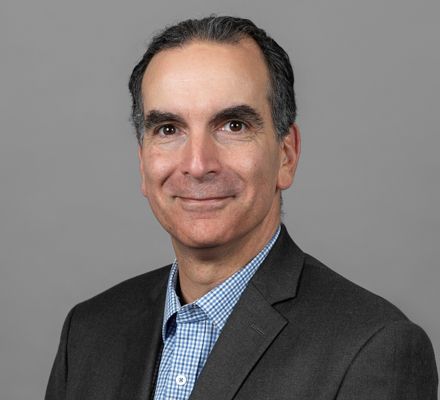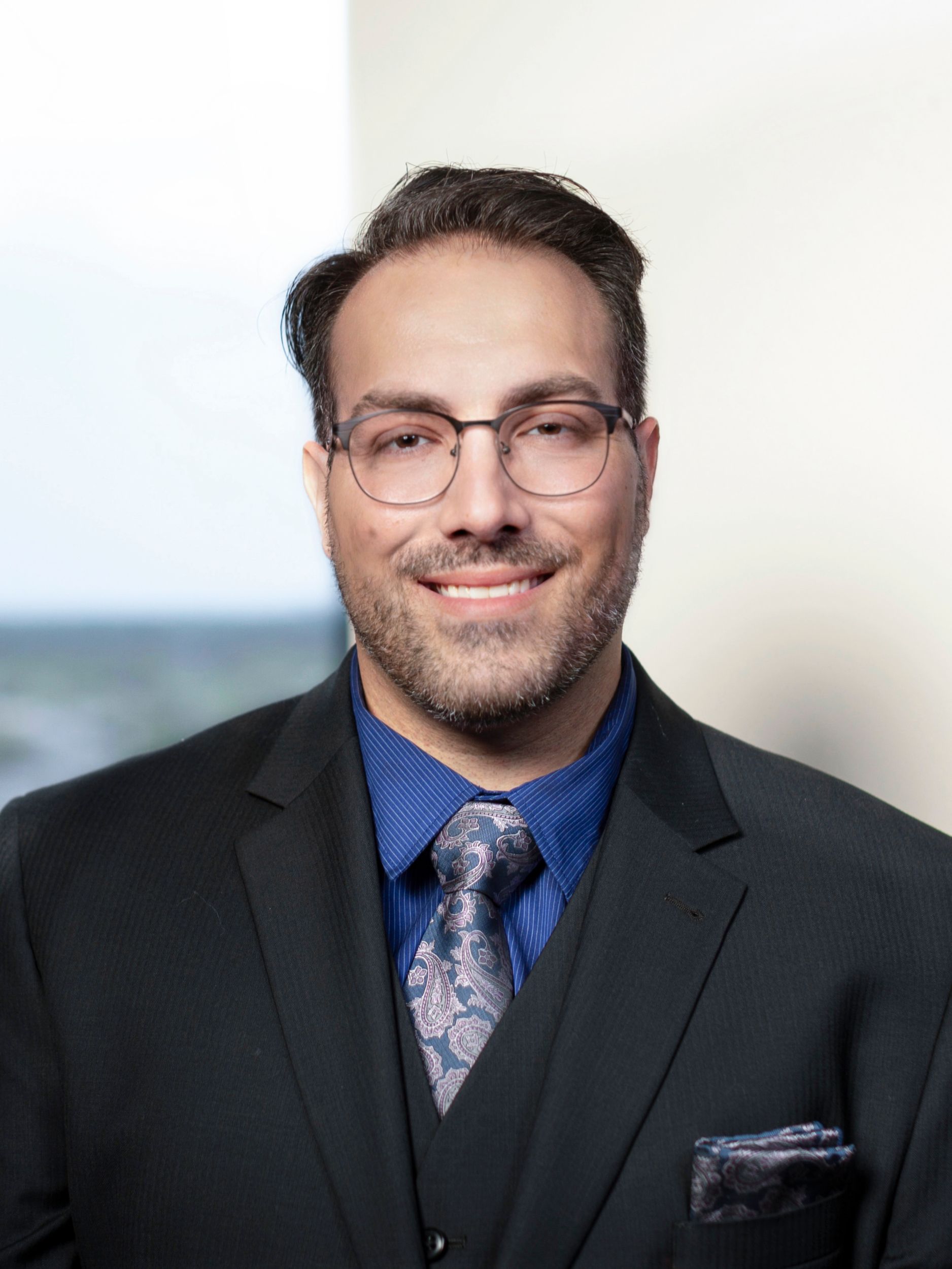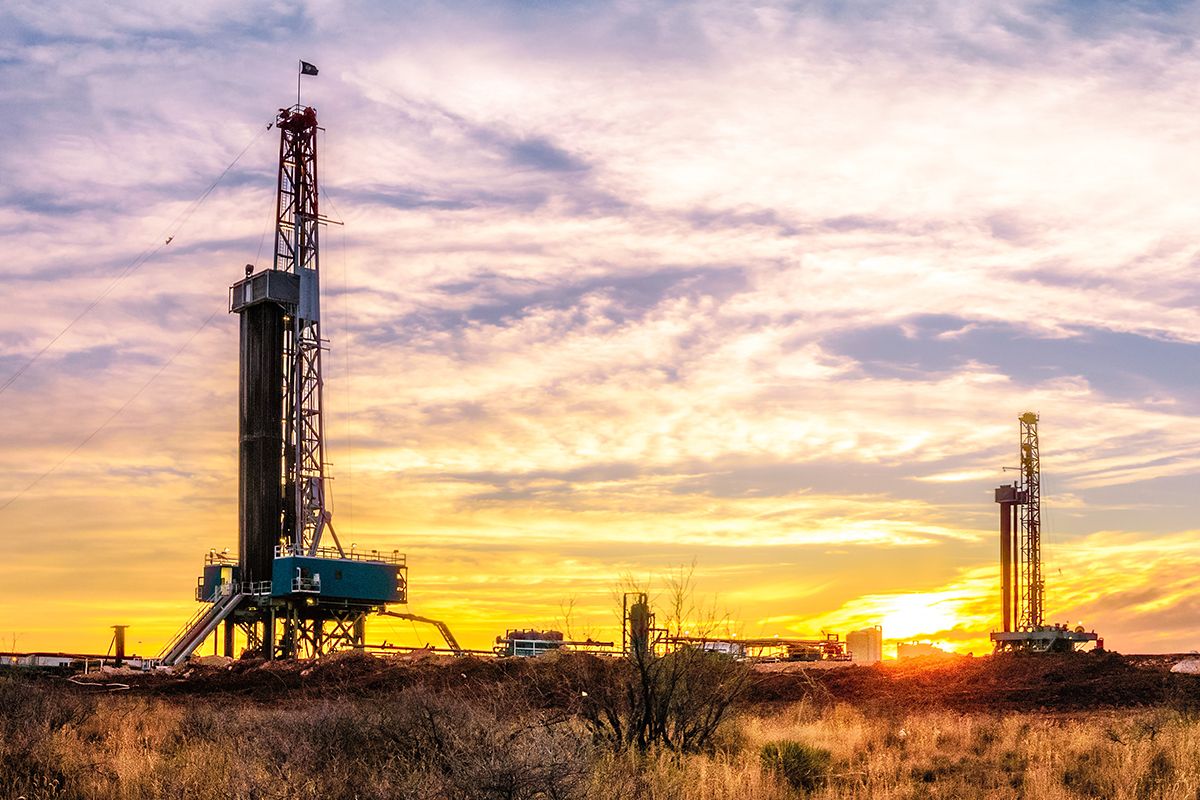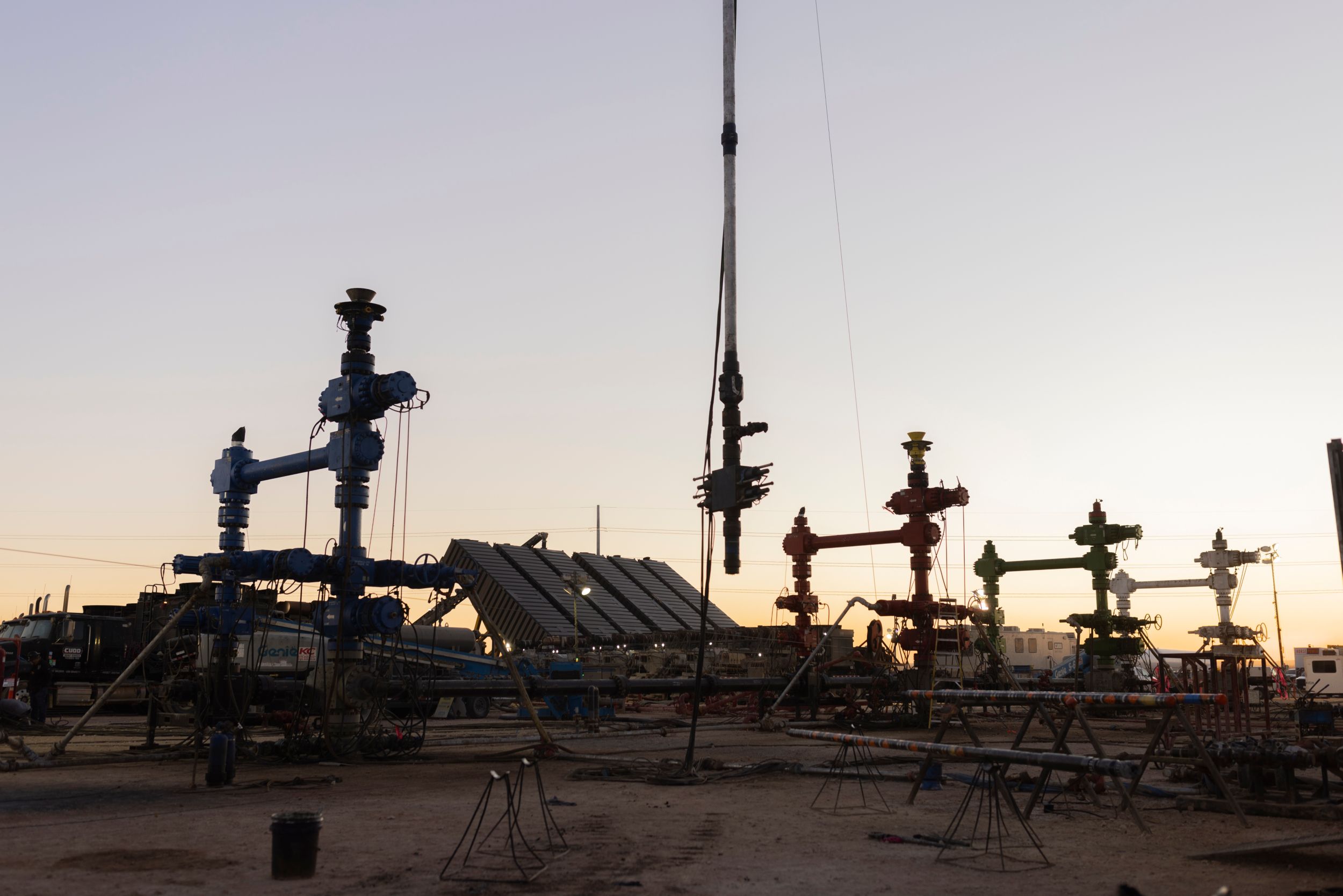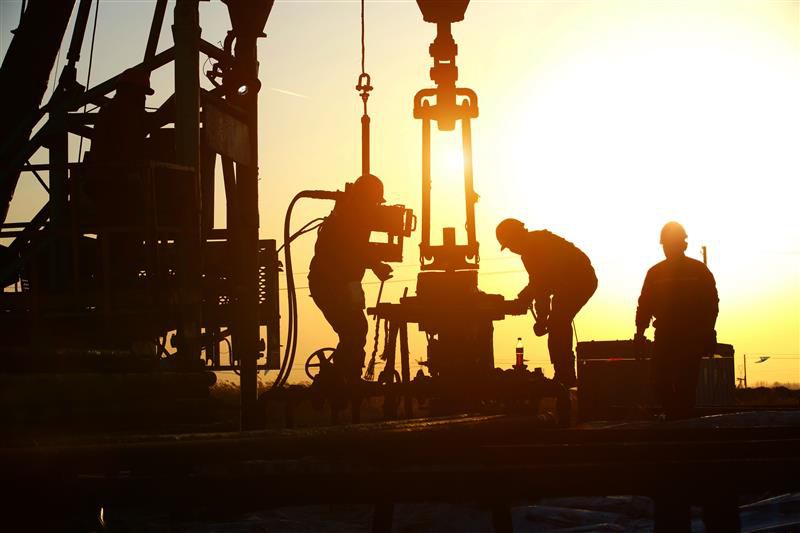Read the full episode transcript
00:00:00 Speaker 1
This episode of The Energy Pipeline is sponsored by Caterpillar Oil and Gas. Since the 1930s, Caterpillar has manufactured engines for drilling, production, well service and gas compression. With more than 2, 100 dealer locations worldwide, Caterpillar offers customers a dedicated support team to assist with their premier power solutions.
00:00:26 Speaker 2
The Energy Pipeline is your lifeline to all things oil and gas, to drill down deep into the issues impacting our industry. From the frack site to the future of sustainability, hear more about industry issues, tools and resources to streamline and modernize the future of oil and gas. Welcome to The Energy Pipeline.
00:00:49 Jordan Driskell
Yates, of course, who is not here with us today, but you've got another Jordan, alternate. That's what we always like to do with this show, is have a Jordan as the backup host.
00:00:58 Paul Khuri
Very good.
00:01:00 Jordan Driskell
Consistency.
00:01:01 Paul Khuri
Yes, indeed.
00:01:01 Jordan Driskell
Consistency. So this is a follow- up episode here at ADIPEC and Abu Dhabi. We're continuing our discussion about drone based sensor emissions and the, excuse me, drone based emissions measurement, which is primarily focused around the sensors that that entails. And we had a conversation with Ian just a little while ago, which you'll hear in another episode. And at this time, we're going to chat with Paul, and he's also with SeekOps, like I said, VP of Business Development. And you and I talked before the show started, you and I were having a little chit- chat and you dropped some information that didn't make it into the other episode that I thought was incredibly fascinating. So I mean, obviously I want you to tell me a bit about yourself, your role as VP of business development at SeekOps and all of that. But I think you ought to pepper in some of those cool facts that we didn't hear in the last episode.
00:01:46 Paul Khuri
Sure, absolutely. Yeah, it's great to be here, Jordan. I'm Paul Khuri. I'm the head of business development for SeekOps. So in charge of business development, strategy, sales, marketing, sort of multiple hats right now, the size company we are. I joined SeekOps just a little over four years ago. I was their first BD guy. At that time, the company's two co- founders who spun the company out of NASA's jet propulsion lab. So they're working on the sensor as part of the Mars Rover at the time. So the guts of the sensor, the bones of the sensor, actually the same ones that we're used to develop the methane sensor sitting on the Mars rover today.
00:02:28 Jordan Driskell
That is correct. I cannot believe we did not get that piece of information on the last episode. That is,-
00:02:33 Paul Khuri
Yep. I'll be giving Ian a hard time about that one for sure.
00:02:35 Jordan Driskell
I mean, I feel like someone should. That is incredible. I had no, I mean, we talked a lot about that sensor, lightweight, durable, easy to set up, virtually plug and play as much as anything could possibly be that's in that sphere. And it's on the Mars Rover.
00:02:54 Paul Khuri
Exactly. It's sitting on the Mars Rover right now trying to detect all manner of methane on the planet. Still functioning.
00:03:01 Jordan Driskell
Well, that's just my favorite fact ever. I'm a huge space nerd. So anything we have in outer space, happy about that.
00:03:08 Paul Khuri
Yeah. So you could imagine it had to be ruggedized for use, not just for oil and gas use, but a use on a different planet. So a lot of design goes into it, a lot of considerations, a lot of a maintenance- free concept. If something breaks, it's not like you just go over there and fix it
00:03:30 Jordan Driskell
A hundred percent. Now, I'll ask you this since we're on that topic. What do you think is the more harsh environment, the oil field or Mars?
00:03:40 Paul Khuri
It's a toss up. So my background, I've been around the oil patch almost 20, 25 years, I would say. And I've seen things out in the field that you're, I've been around technology launch the whole time. So new sensors, new measurement devices has been sort of my specialty. And you take it from engineering, you take it from the lab and what you think are field trials. Then you go out on site and all of a sudden you're looking at somebody handling your equipment like, oh man, hope it doesn't break. It wasn't designed for that. So yeah, it's tough. I mean, if you can make it on Mars, you can make it on anywhere.
00:04:18 Jordan Driskell
I mean, I would think. Yeah, right. That is such a cool fact. I Absolutely, that's my new favorite thing of the day, right there.
00:04:26 Paul Khuri
Yeah, there you go.
00:04:27 Jordan Driskell
So when it comes to building on what Ian discussed previously, let's talk about how some of this data collected by the drones is contributing to better decision- making in the development of sustainable strategies.
00:04:39 Paul Khuri
Sure.
00:04:39 Jordan Driskell
What's some of the real impact that you've seen?
00:04:42 Paul Khuri
Well, a lot of times it sounds simple, but if you're trying to solve an issue, understand a problem and so on, you're not going to get anywhere unless you have the right data to base your decisions on. I mean, that doesn't just apply for methane emissions, just in general, running a business or running any kind of project. So a challenge like emissions, mitigation, a challenge to have a truly sustainable operations, you've got to have a starting point. And if you have incomplete or incorrect data, it's going to drive your entire decision process, which could be wildly different depending on what information is you're getting as your baseline. So in our case, specifically, our sensor provides that baseline emissions data for a lot of the operators in oil and gas who are new to this concept where this is the first time they've had to directly measure their emissions rather than calculate their emissions based on plant capacity, operations, et cetera. So up to this point, the majority of energy companies have, they've been accounting for emissions, but they've been doing it by engineering calculations rather than direct measurement. Because it's been a significant challenge to be able to get that direct measurement.
00:06:02 Jordan Driskell
Yeah, we talked a bit about you had satellites, which are 500 miles up, and they can only detect a certain amount. Even manned aircraft will only get you so far. Whereas drones can pretty much get right, for all practical purposes at that scale, just right up to the leak itself and know what's going on. I mean, that's incredible, especially with the type of sensors you guys have.
00:06:27 Paul Khuri
Correct. Because a lot of times if you don't have a really good minimum detection limit on your emissions, you could survey a site with an aircraft or a satellite, for example, and say, well, I didn't pick anything up here, so guess we must be good. So you just move on to the next one. But the reality is you just didn't pick it up because you can't detect below that middle.
00:06:49 Jordan Driskell
You could've had 500 leaks happening below that detection zone that you wouldn't even catch.
00:06:55 Paul Khuri
Exactly. And that's the next challenge for a lot of the, I would say the early movers or early adopters in the oil patches. Some of them have already spent the last two years getting after their worst case emissions, the largest emitters. Let's mitigate that, which is fine, and that's great. So that gets the large chunk of the very, very worst case facilities or worst case emitters. But now what? Over half your emissions are those low emitting facilities that you may have not detected already. So you still got to go after those.
00:07:31 Jordan Driskell
Right. So in your view, how could different players in the industry, regulatory bodies, whatever, leverage some of this data to make some positive environmental impact and up the game when there's sustainability practices?
00:07:49 Paul Khuri
Great question. So I think two things here. One is the ability for, especially the regulatory bodies to understand that there is the pace of technology that's coming on right now for emissions, for example, what you can do with a drone. All those considerations has really pushed the ability to truly go after the entire spectrum of your emission's footprint. Not just, well, I guess the only thing we can do is just get after the worst case, and then we can't really see the others. Well, we can, we can see everything. Knowing that, and then not just seeing them, but being able to go and identify those emissions in a way that's not going to break the bank. Because you can spend a significant amount of money trying to go after every single emission source with legacy technology right now. It's very manual, very labor- intensive. You spend hours and hours and hours trying to chase the one single leak. Where now you've got a screening technology, especially on a drone, where instead of having to send your service tech in a truck to go out somewhere in the middle of nowhere, on the off chance that there may be admission there, you can send a drone remotely, cover all of these sites and come back and say, yep, we're good today. Or, we have an issue, we have an issue only in this site. So you don't have to go around the 2, 3, 400 sites on the off chance you're going to find that leak.
00:09:20 Jordan Driskell
And it seems to me, to piggyback off something you said right at the start of that, the pace, we hit a point in my opinion, and I think we sort of hit this point within the past 20 years, where the pace of technological advancement has outstripped our ability to comprehend the full impact that technology could have in almost any field.
00:09:50 Paul Khuri
Exactly. I'm fully confident there are applications out there that we haven't even thought about-
00:09:57 Jordan Driskell
Just not even dreamt of.
00:09:58 Paul Khuri
Exactly. It's the technology pace, the data analysis pace, the sophistication, it's all coming together and it's accelerating like crazy, and you're hard- pressed to keep up. I mentioned before, my background in new technology launches in the oil patch, even 10, 15 years ago, it was a much more measured, I would say, measured pace of introductions of new technologies. And let's face it, we've had a reputation, deserved or not, in the industry that we're not known for rapid adoption of new technologies. My early career, I spent a lot of it in aerospace. And if you had a new technology in aerospace, they want that thing on the jet yesterday.
00:10:48 Jordan Driskell
Yes.
00:10:49 Paul Khuri
In oil and gas, the reputation was that if it's something new, come back to me in five years when somebody else has used it. So I don't want to be the first one to try it.
00:10:59 Jordan Driskell
So funnily enough, earlier in my oil and gas journey, I worked for a oil and gas accounting software company. So I have a software background. It's how I got into the space as well. And I remember when I got there, we were using everything, it was Windows based, windows
00:11:20 Paul Khuri
XP.
00:11:21 Jordan Driskell
XP and all that. Yeah, I'm got flashbacks. No, the real astonish. I thought that was bad enough. And I was going, guys, what are we doing with the, I mean, why not Millennium Edition while we're at it? But then they're like, oh, no, this is the new version of the software. I said, guys, it's 2014. That's not the new version of the software. No, it is. And I said, no, it's not. We need to do better than that. But then they said, okay, hang on. And they got me on the phone with a client who was one of many clients still operating the Doss version of the software. And I said, okay, I see. I think see the problem.
00:12:06 Paul Khuri
Countless stories of that, I have no problem believing that. It's true. It's the old if it ain't broke, don't fix it idea just keeps going. Because I mean, honestly, a lot of times, especially out in the field these locations, they're remote, they're under the gun. It's all about production and safety, all these other things coming at them. They don't have a lot of time to think, well, maybe I should upgrade to this or upgrade to that. You know what, this part of my system is working.
00:12:38 Jordan Driskell
And it's kept working. We know it's bulletproof. This thing might not be, and we're not going to take that chance of slowing down the line.
00:12:44 Paul Khuri
Exactly.
00:12:45 Jordan Driskell
I get it. Still throws me for a loop sometimes. I think we converted our last client off the Doss product in 2017.
00:12:55 Paul Khuri
That's amazing.
00:12:55 Jordan Driskell
When it finally happened, I was like, I don't even believe that I'm saying that we've finally got somebody off Doss in 2017. What world are we living in?
00:13:05 Paul Khuri
Oh yeah. That's very true.
00:13:08 Jordan Driskell
I like to say that my accounting clients in oil and gas, were about 10 years behind the kitchen appliance industry.
00:13:16 Paul Khuri
That's about right.
00:13:18 Jordan Driskell
So to sort of segue back to what we had talked about a second ago, and I know we can't predict all the ways this could go, but what do you think some of the broader applications are for sustainability that the drones and these sensors that you have will impact sustainability in oil and gas?
00:13:41 Paul Khuri
So our sensor right now, for example, we're just detecting methane. Everybody's concentrated on methane. Methane, methane. Okay, well, what else do we need to look at? There's plenty of other greenhouse gases that we haven't addressed yet. So for example, in our case, we're coming out with a CO2 sensor next year. That's going to be another-
00:13:59 Jordan Driskell
Oh, that's a game changer.
00:14:02 Paul Khuri
It's going to be another huge application. Again, beyond just oil and gas for us, there's mining applications, there's construction applications, there are produced water, water treatment. Those are all venting sources. We doing a lot of work right now in biogas and landfills, and there's-
00:14:23 Jordan Driskell
Yep. We talked about that in the last episode.
00:14:26 Paul Khuri
And using a drone platform form just increases your ability to access all those sites remotely without having, you're really reducing your manpower requirements and your speed of your inspections, for example. As far as the rest of sustainability, you could walk around ADIPEC today, you can see they have some of these huge drones that are doing seed planting, they're doing agricultural surveys, they're being used in forestry. They're being used in all kinds of these other applications. We haven't even, again, we know what we know right now, and we think we've got good applications, for example, but we haven't totally vetted them out. And we're constantly surprised, happily surprised when we go out and we'll come out and do a survey and it's somebody out in the field go, have you guys thought about using drones for X, Y, or Z? And you're like, yeah, but it's really hard as a technology company, not hard, but I think it's sometimes where we got a lot of tunnel vision. We're just too close to it. You're just so focused on this one thing that all it takes is somebody, a third party just totally detached to it, go, I don't live and breathe this all day long, so I've never thought about using drones. Can I use drones for this? And you take that back to your engineers and go, what do you think guys? And they're super excited all of a sudden, of course we can do that. I just didn't think anybody wanted to do it. I'm like, yeah, they do.
00:15:57 Jordan Driskell
It's like that anecdote that I heard a long time ago about the invention of the automobile. And I don't remember who said it, so I can't give proper credit here, but if you had asked Henry Ford, if Henry Ford had asked a person, a passenger what they wanted in life, it would've been a faster horse. They wouldn't have said a car.
00:16:15 Paul Khuri
Exactly. That's it.
00:16:17 Jordan Driskell
And that's where you're at here. You talk to some of these guys and they're going to say, oh, well, I want a better way of doing this thing. But then you talk to someone else and you instantly going, well, what if we did this? Yeah, what if we did that? I mean, five years ago, if you said, or maybe 10 years ago, if you had said using drones to detect CO2 or methane, people would've looked at you like you were insane.
00:16:42 Paul Khuri
Exactly. And that's part of the other challenge we have in this industry, and I'm not sure if Ian touched on this, but in an industry that's not known for rapid technology adoption, we are asking, regulators are forcing a lot of these energy companies and operators to take on new technology at a much faster clip than they're used to. Taking them way outside their comfort zone.
00:17:06 Jordan Driskell
But it seems like you've kind of done it though.
00:17:10 Paul Khuri
Proof's in the pudding. We show them our results, we show them what we can do, and once they get over the initial shock, they understand that it's legit. We've been through all of the validation process you have to go through. We've done an offshore, onshore, day, nights, all kinds of conditions. So once you've gone through all those stage gates, once you've gone through all your, I guess your rite of passage to be accepted, it just comes back to, okay, you know you've got this legit technology. It's available today. So either you're going to continue this debating onwards of what about this application? Well, we can't do this. We can't do that. Well, okay, we can do 99% of what you really want.
00:17:56 Jordan Driskell
Right.
00:17:57 Paul Khuri
We worry about the 1% later on. Like you're saying, Jordan, something, we can't envisage today how to solve this problem, but why don't we solve the rest of the problems that we can solve today?
00:18:06 Jordan Driskell
Yeah. And there's no shortage of them.
00:18:09 Paul Khuri
Exactly.
00:18:10 Jordan Driskell
Interesting. So let me ask you this, since you guys deal a ton with big data and providing this information to your client ultimately so that they can make their decisions, data security, always a concern for everybody at all times. How do you ensure the security and privacy of any, I mean, one, is there any of this information that your clients are ever worried about from a sensitivity standpoint? And how do you guys help ensure that?
00:18:38 Paul Khuri
It's always production data is the most last sacrosanct data. That is, man, that's the sanctum sanctorum. There's no way anybody's going to access that. It's actually one of the first things we ask potential customers is, okay, you believe in what we can do. We are told you what we can do. What are you going to do with this data? It's great to have all this information and you're just going to, I don't know, you just put an alarm around it and then worry about it when it becomes an issue. So there's two things. One is to ask the customer or ask the operator, what do you really do with this data? Because, so this data is going to go into this giant database that has all kinds of information. They got drilling information, production information, leak information from us. They have, there's thousands of measurement points in any facility that are doing more than just emissions. Flow computers, all kinds of stuff like that. So how are you synthesizing all of this to improve your operations, to improve your process, optimize everything? So securing that data is a big deal. In our case specifically, all our data is encrypted, it's not broadcast over the air. It's on an encrypted SD card that is transmitted to a secure cloud- based, we have Amazon backbone, et cetera. So we're using commercially available secure links in all of our process flow.
00:20:13 Jordan Driskell
But these are all the big boys. I mean, these are all folks that are heavy duty doing major business security.
00:20:20 Paul Khuri
Exactly. So we're not trying to reinvent the wheel ourselves. We'll piggyback on existing encrypted or secure site that's pretty widely accepted and widely proven. On the customer side, again, on the operator side, there's a lot of different companies out there that are in the business of secure software and then data integration. So they can take all of these inputs from, all right, here's the drone data, here's the satellite data, here's my onsite pipeline monitor data. What is that really telling me? Who's going to put all this together and say, okay, based on this, you need to tweak this valve, or use this chemical, or back out on this, or whatever the case may be. But it's a huge challenge on the customer side, Jordan, of now you've got literally this just giant wall of data coming right at you and you're going to figure out, what do I do?
00:21:18 Jordan Driskell
Do you guys do any consulting around that data on how to do it?
00:21:25 Paul Khuri
It's very basic on our side. We actually work with a lot of consulting type companies, whether they're environmental consultants or whatever the case may be, that will take our data and then combine it with the other sources that they have coming in. And then deliver to the end user, okay, here's what all these things are telling you about your site, about your facility, about your operations.
00:21:48 Jordan Driskell
You guys have found quite the space, man. It's going to be a wild ride, I think.
00:21:54 Paul Khuri
It is. It's obvious to us. We're just scratching the surface. So we're very excited about, to see what's coming up.
00:22:03 Jordan Driskell
I mean, anytime your platform starts at Mars and then back doors its way into the oil patch. Impressive.
00:22:10 Paul Khuri
Yeah. Thanks.
00:22:11 Jordan Driskell
That's a boast you should have.
00:22:13 Paul Khuri
Yeah, it's a great crew. We've got a lot of very hardworking engineers. We do have quite a few that came over from the original team at JPL, so it was good to keep that corporate knowledge in house.
00:22:25 Jordan Driskell
Absolutely. Now, I know you guys, you won, if I recall correctly, you guys won startup of the year. I think it was last year?
00:22:33 Paul Khuri
Last year.
00:22:34 Jordan Driskell
That's great. So I mean, you guys have clearly had to do a lot of international stuff really, really fast.
00:22:41 Paul Khuri
Correct.
00:22:41 Jordan Driskell
And the final question is about how scalable you think this is. Now, it seems to me, from where I'm sitting, having had these two conversations, especially for a startup, you guys have scaled tremendously successfully for just everything to be considered. What's your thoughts on scalability?
00:23:05 Paul Khuri
In our specific case, the drone really is not the magic. SeekOps is all about the sensor and the sensor technology. The drone is an off the shelf drone. We chose a model that's got, it's almost like the Kleenex or Coca- Cola of the market. It's 70% of the market, 80% of the market. Everybody flies this model drone. So in our case, we're looking at, okay, how do we expand internationally? What's the best way for us to access all these markets? What's the way? Well, ultimately, what is the best way for us to deliver our service to our customers globally? Because we work with international oil companies that have multiple sites in multiple countries that want to have consistency of measurement. So we want to use the same measurement device across all my facilities. So the data coming in, we know it comes from the same source, same source of measurement. So we looked at around the world, okay, number one, use of drones for inspection, let's say, is the last five years has really come on very strong. It's become more widely accepted. More operators are very comfortable using drones. Now, some of them have even their own drone teams in house.
00:24:17 Jordan Driskell
Which is crazy to think about.
00:24:19 Paul Khuri
Yeah. So what we do is we'll go out and look for a drone service company, a drone service provider, either for a specific operator or a specific country or region, and then we'll train them on how to fly our sensor on their drones. So it makes it, from the practical standpoint, it makes it a lot more accessible for us to say, we're going to send you our sensor. We're not sending the whole drone. You don't have to worry about logistics and shipping, blah, blah, blah. Here's the sensor. You know how to fly it. Obviously, we audit them on a regular basis to make sure that they're maintaining our safety standards, or quality, et cetera. But it becomes a lot more practical, a lot easier to access these locations if you've got somebody that's already got, they've already got boots on the ground. They know how to fly. They know what the expectations of those customers are. They're familiar, whether it's on or offshore, oil and gas, landfill, whatever the case may be. So literally, we're just providing the hardware. They send us the data back, again, through an encrypted backbone. Our guys back in Austin will do all the analysis and reporting and then just deliver the final report to the customer.
00:25:33 Jordan Driskell
That is outstanding. That's very cool. Like I said, you guys have... I love seeing this level of technology starting to get into this industry in this way. And I think that's fantastic. Paul, I want to thank you for coming by and talking with us today. This has been an absolute delight. I have tremendously enjoyed getting to learn more about SeekOps.
00:25:55 Paul Khuri
Thanks, Jordan.
00:25:56 Jordan Driskell
And yeah, this is Jordan Driskell, and this is Paul Khuri signing off.
00:26:01 Speaker 2
Come back next week for another episode of The Energy Pipeline, a production of the Oil and Gas Global Network. To learn more, go to OGGN.com.


